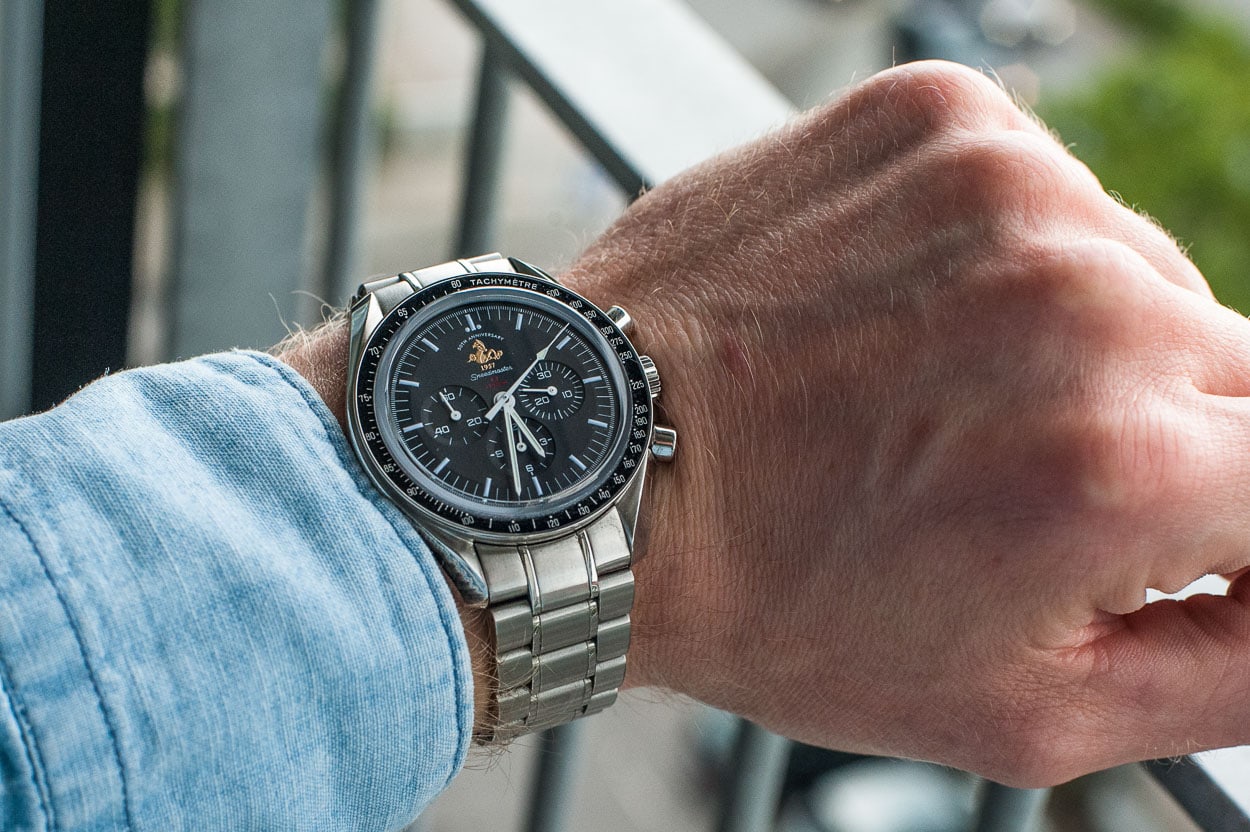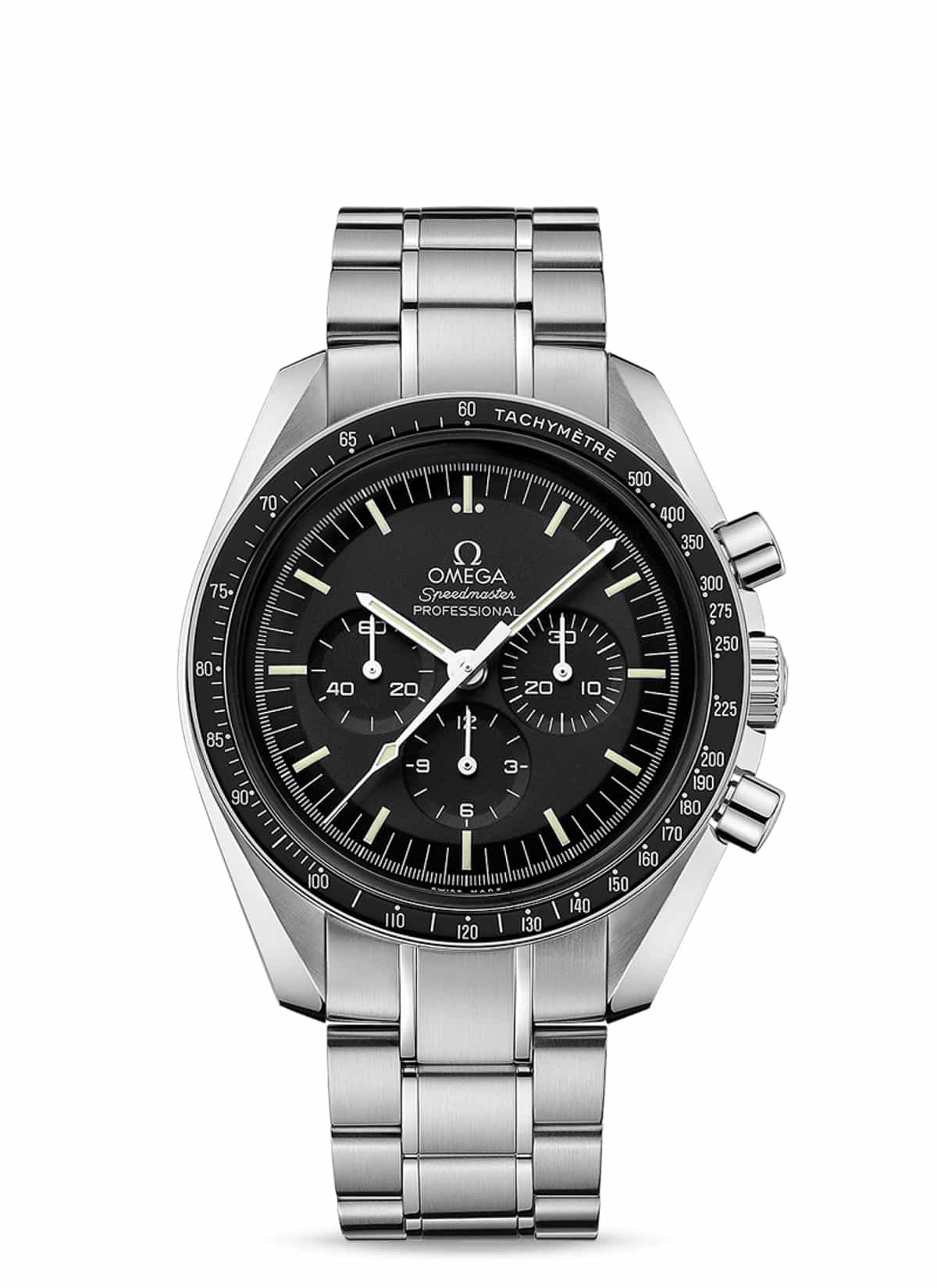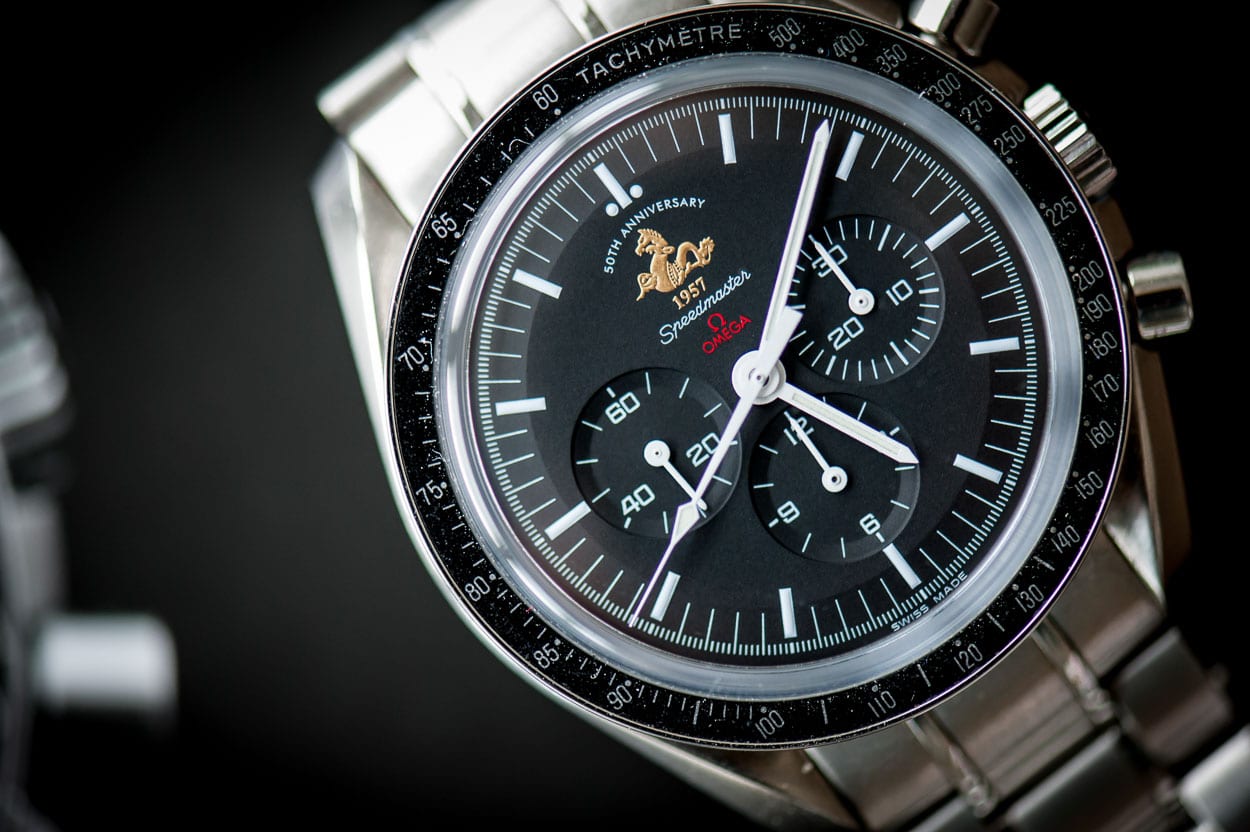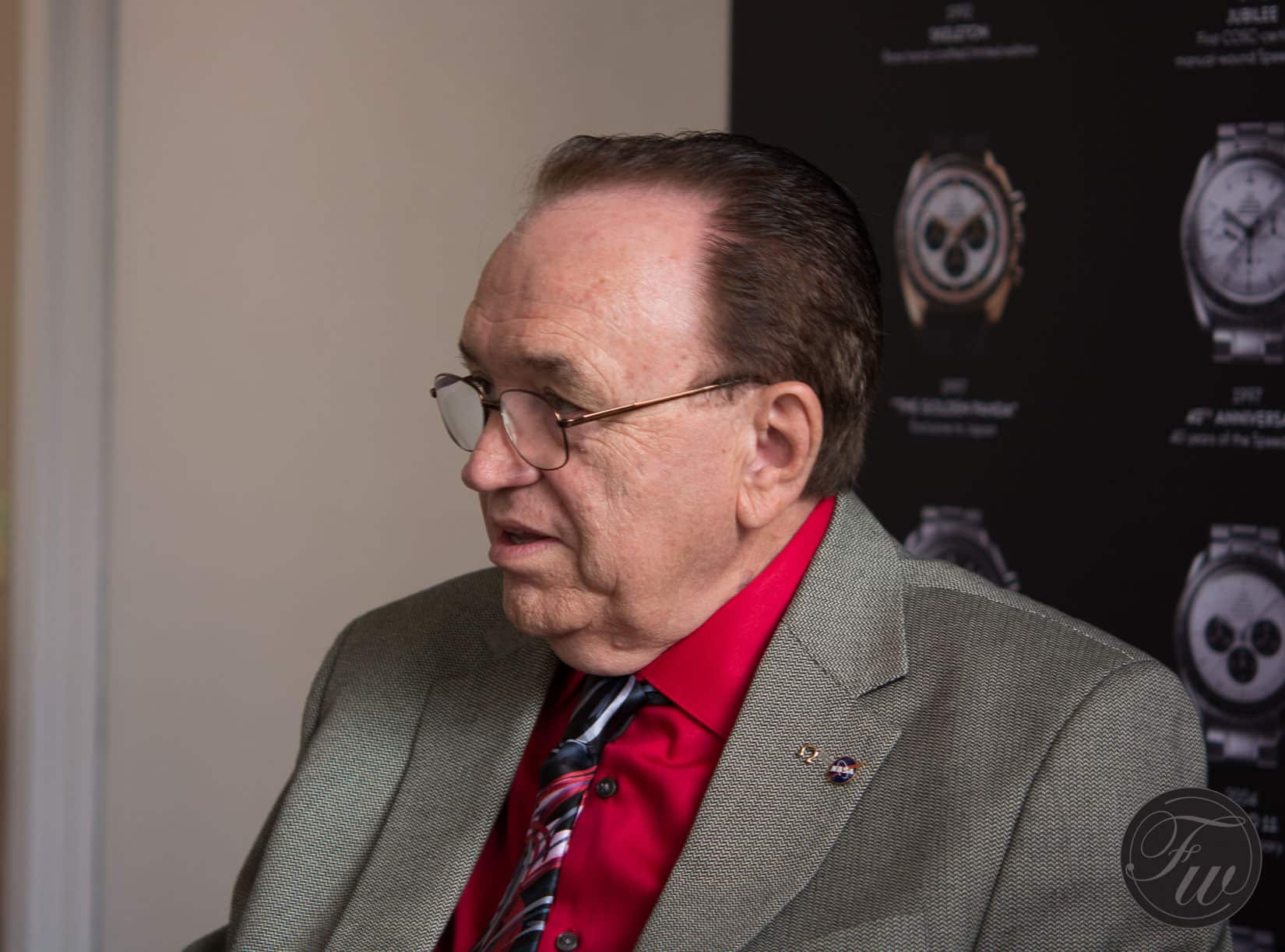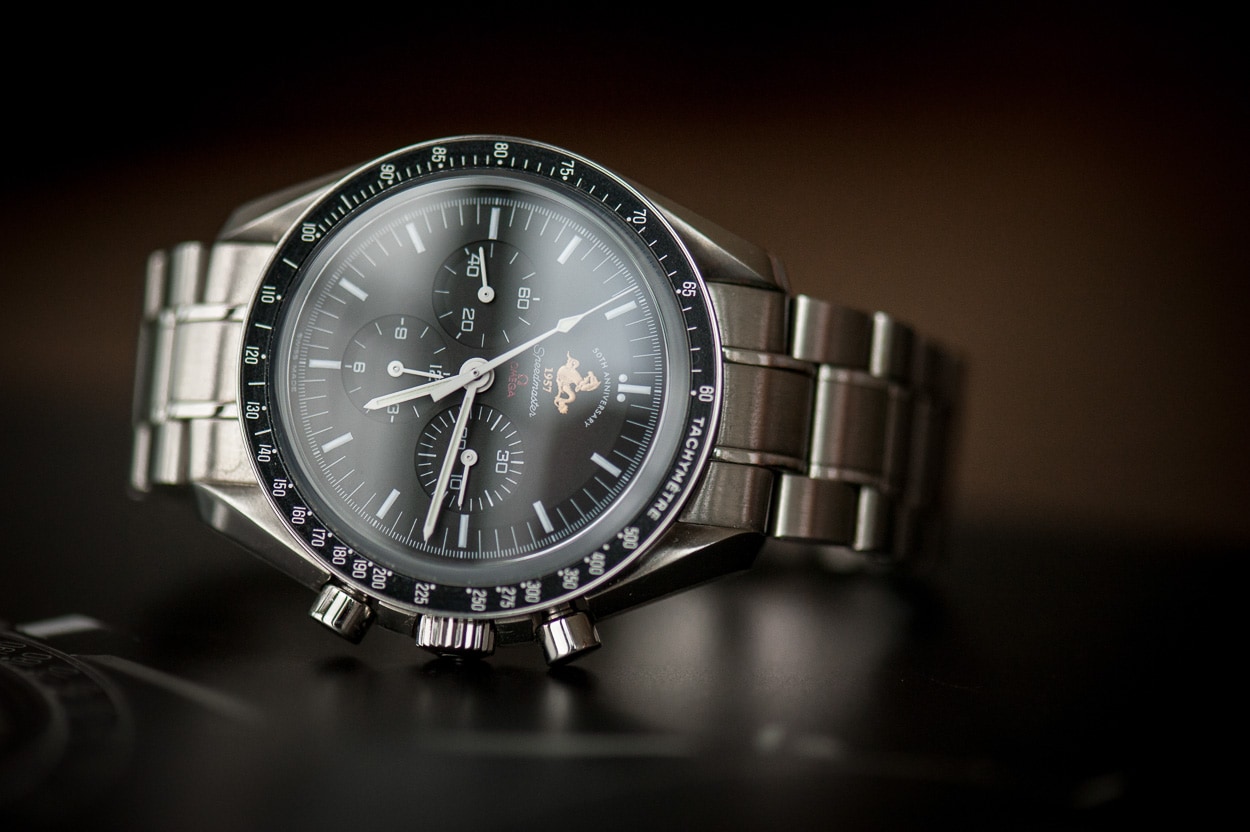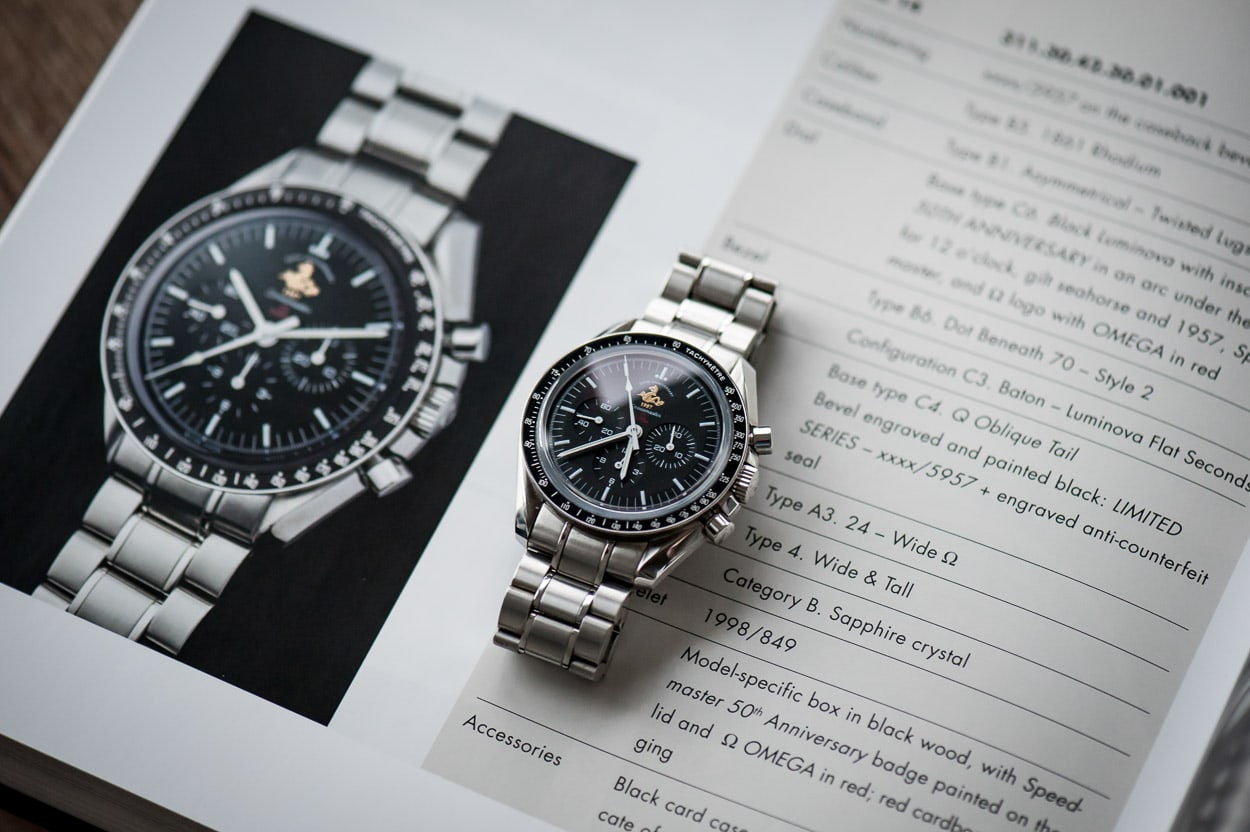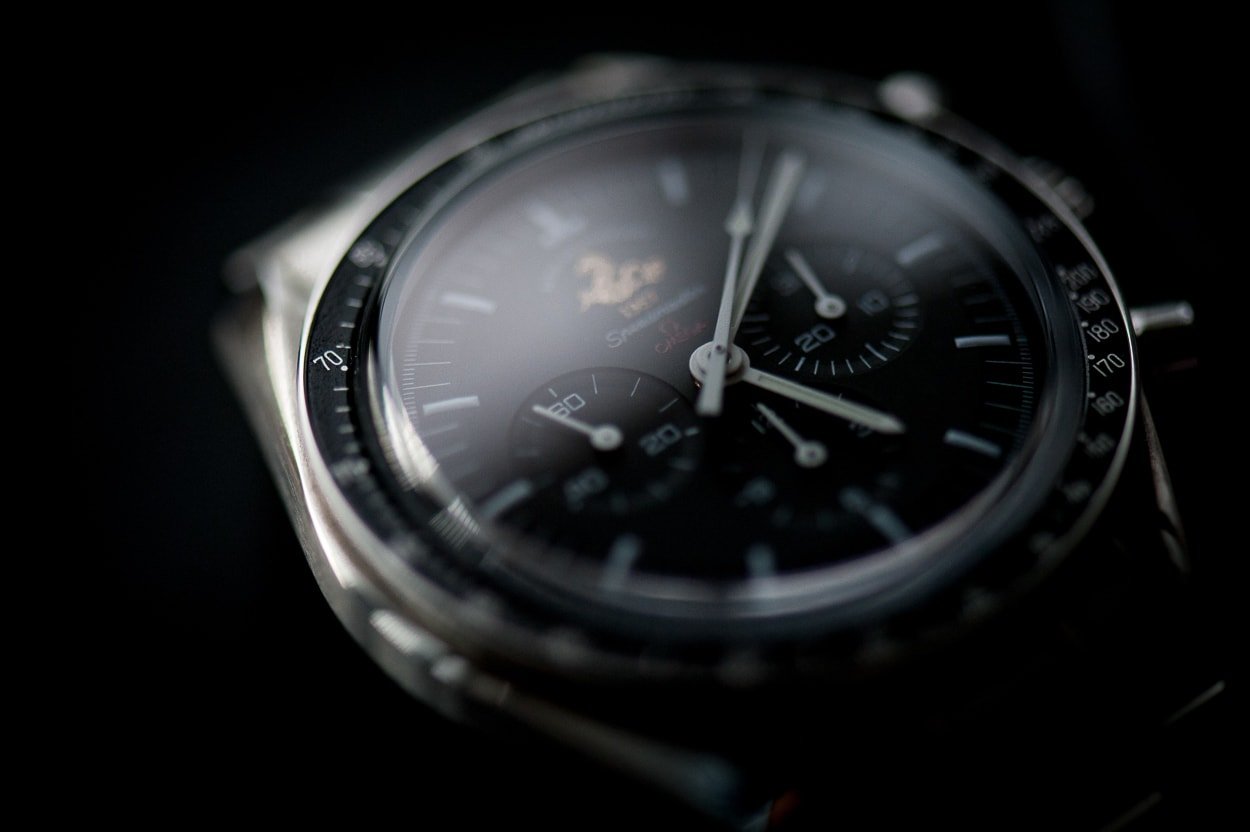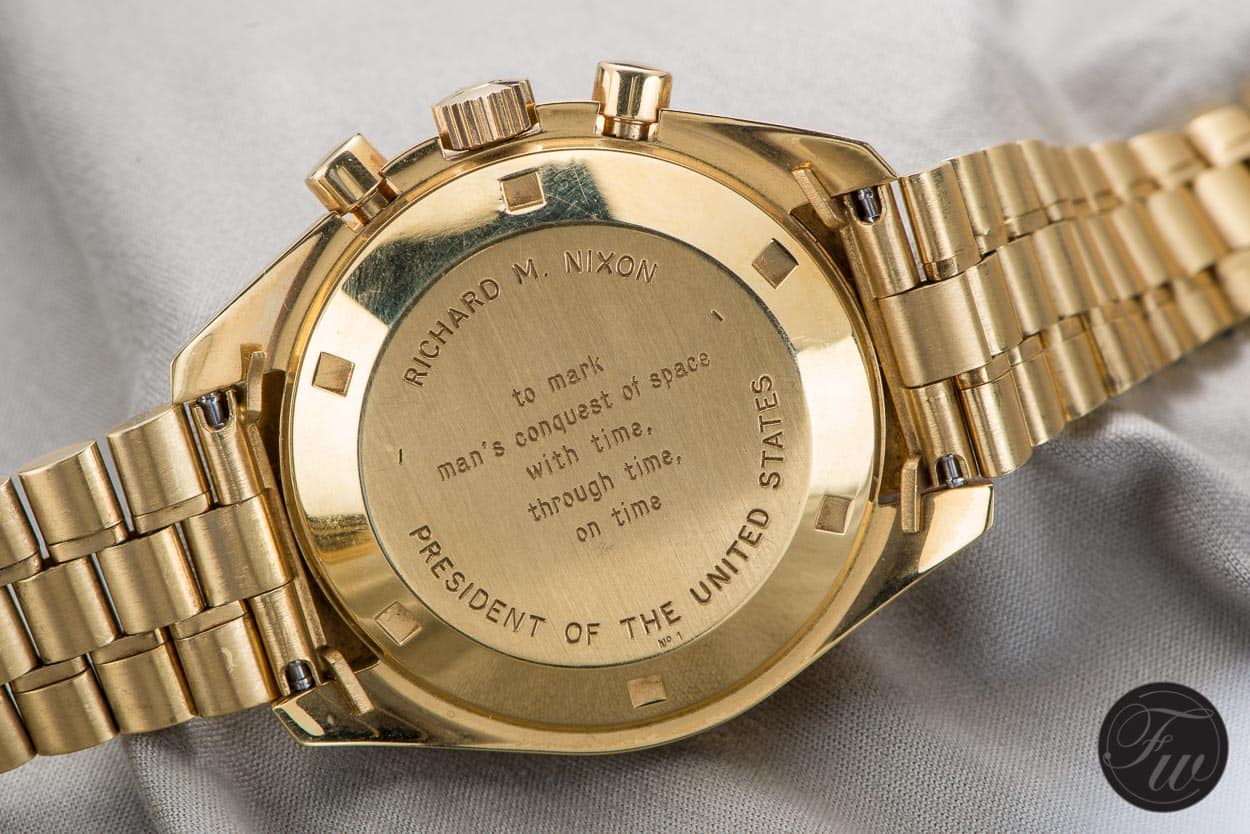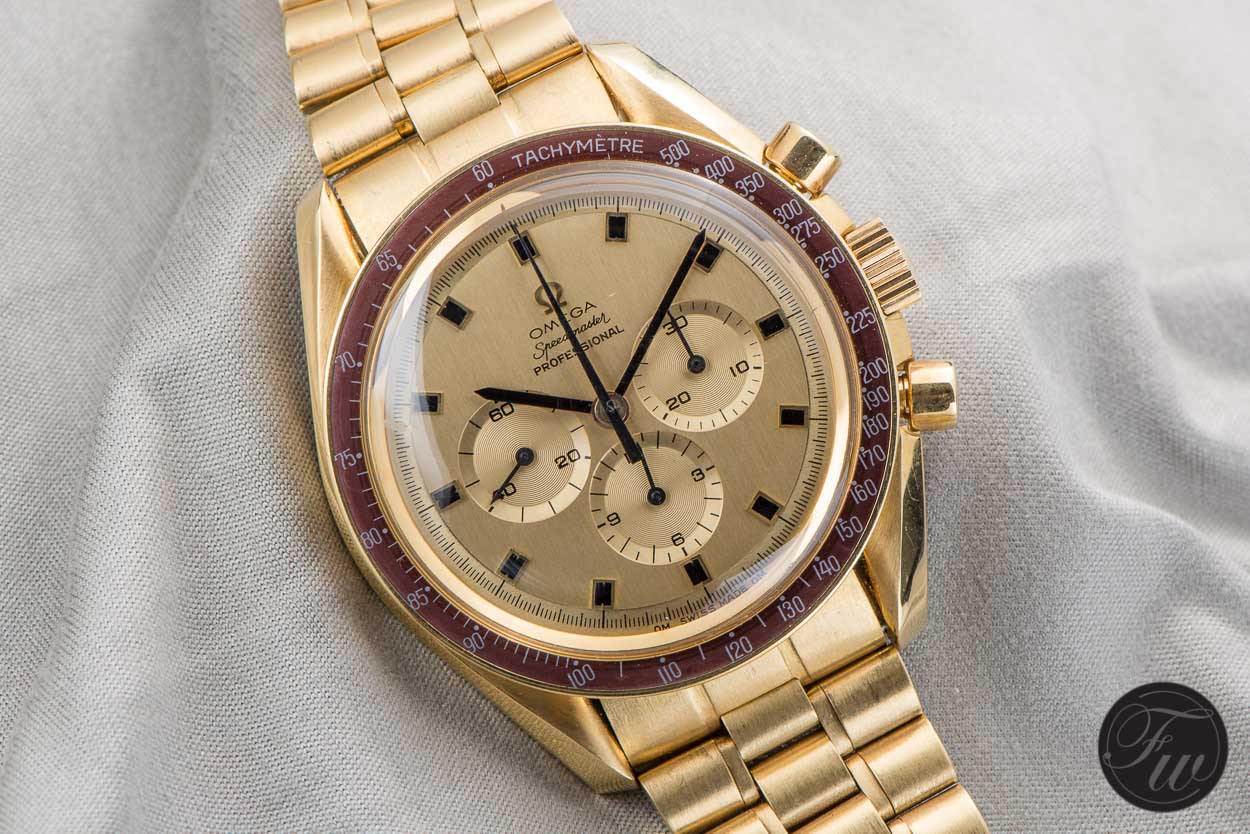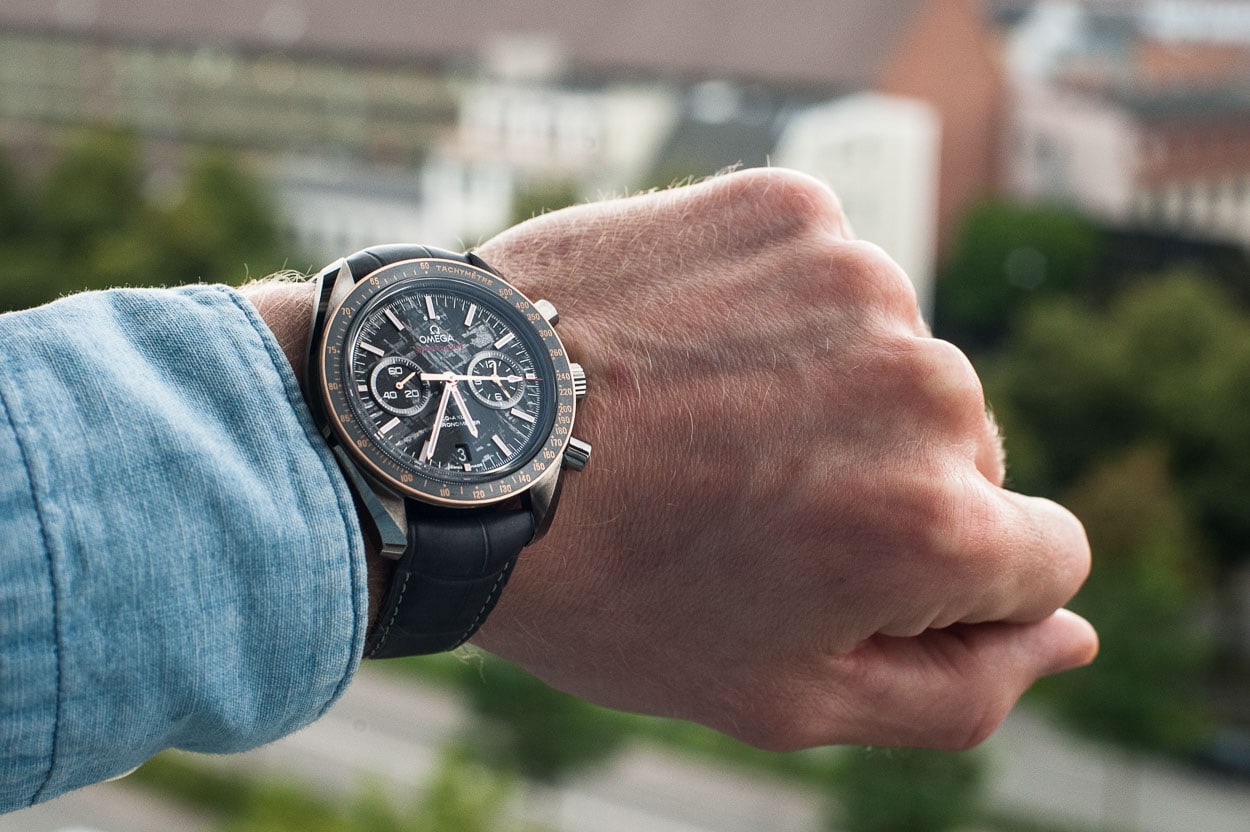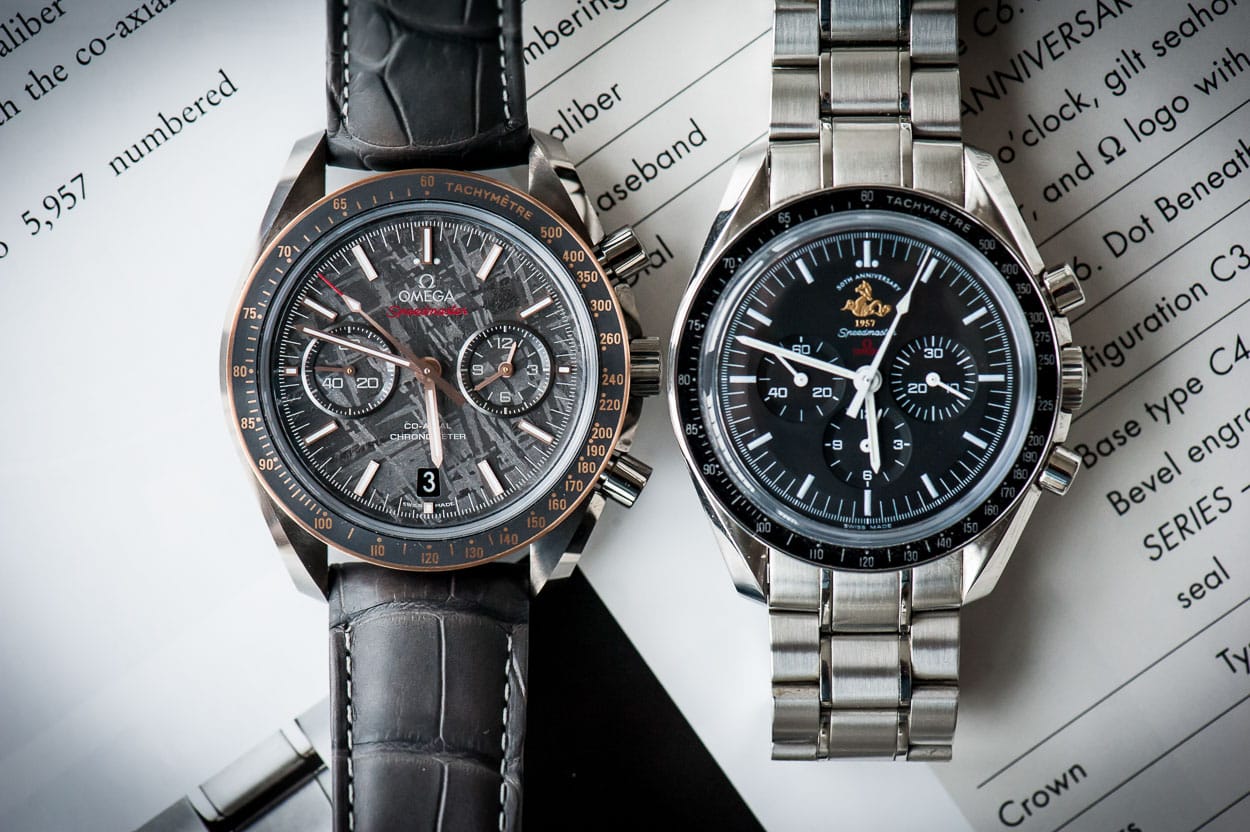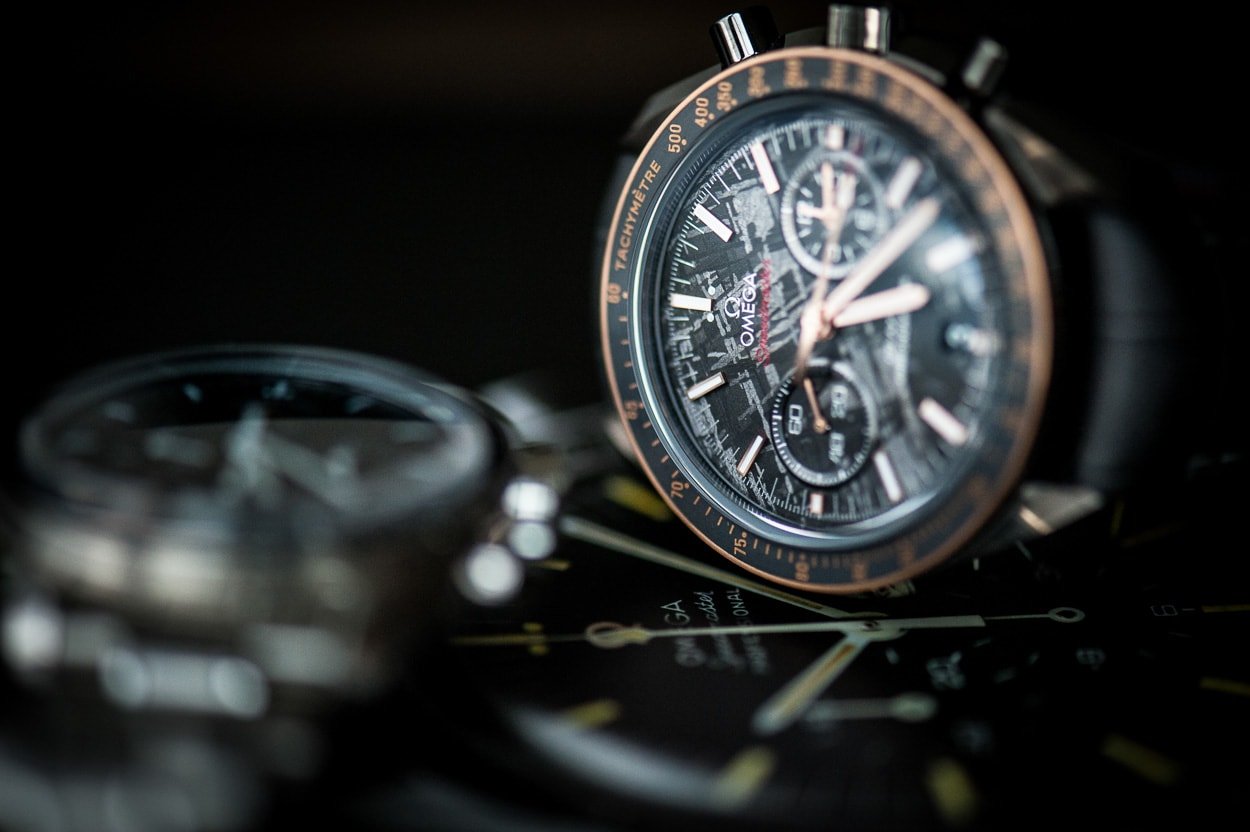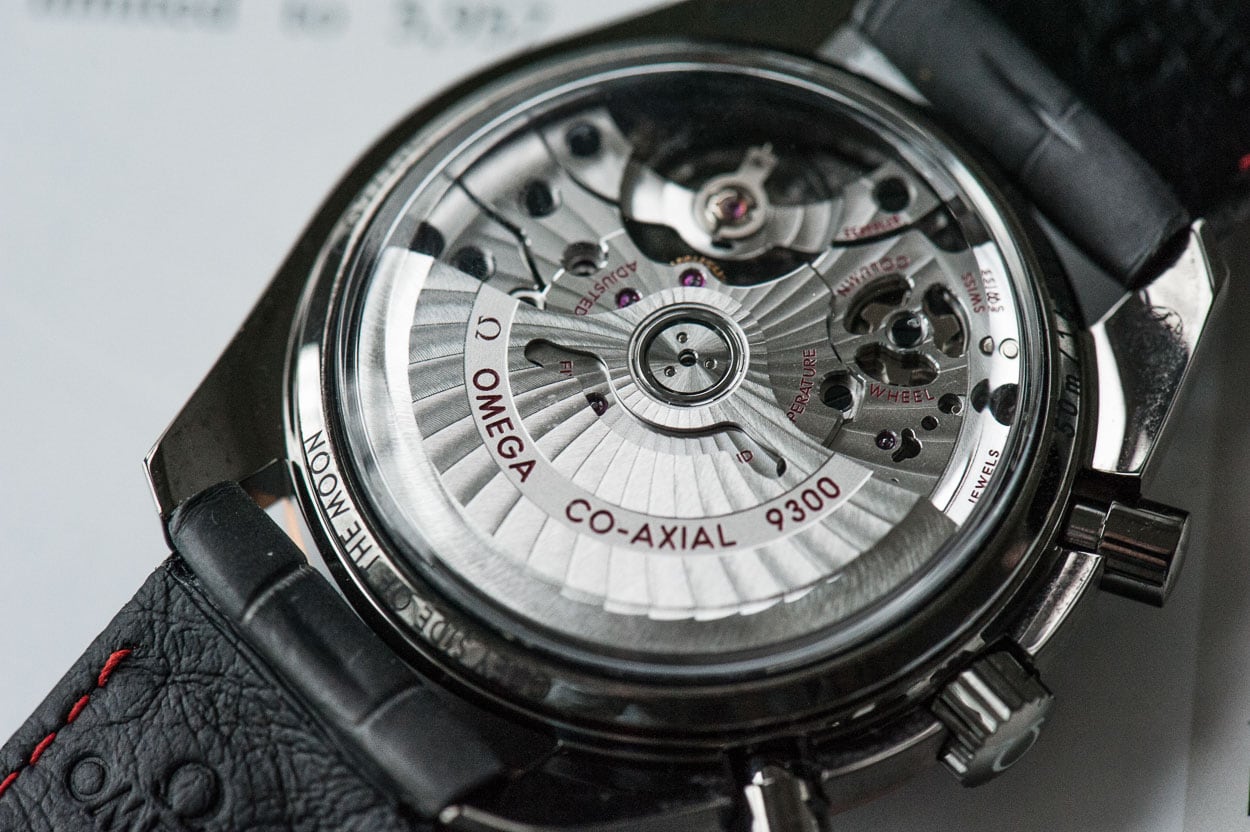Speedy Tuesday – A Collector Talks About His Omega Speedmaster 50th Anniversary ‘Patch’ 311.30.42.30.01.001
One of the benefits of having the Speedy Tuesday feature is that you often run into interesting people with interesting stories. Last week I was in Tokyo and met a guy who picked up his Speedmaster Speedy Tuesday in the Omega Boutique in Ginza (and I joined him) and had a wonderful time with him discussing watches and Tokyo related things. One of the guys that joined us in Tokyo for our Grand Seiko reader’s journey was a Speedmaster fan himself as well, and we had interesting discussions on the importance of details on these vintage watches. For this week’s Speedy Tuesday however, we have collector Mark Sinclair talking about his Omega Speedmaster 50th Anniversary ‘Patch’ reference 311.30.42.30.01.001, accompanied with some stunning images from photographer J. F. Sørensen.
Speedmaster 50th Anniversary ‘Patch’
The Omega Speedmaster 50th Anniversary ‘Patch’ model was introduced in 2007 and limited to 5957 pieces. Quite a big number, but keep in mind that the annual production of Omega is somewhere between 600.000 and 700.000 watches and the demand for their limited editions can be quite high some times, so everything is relative. Besides this watch, Omega also released a model in steel (and in gold) in 2007 that was limited to only 1957 pieces (and 57 for the gold model) with a hand-wound F.Piguet-based caliber 3201 movement.
We talk to Mark Sinclair about his Speedmaster 50th Anniversary ‘Patch’ 311.30.42.30.01.001 however, and ask him some more Speedmaster related questions.
Mark, how did you learn about the Speedmaster? Were you always a collector, or was the Speedmaster your first love?
It’s a good question, Robert.
Simply Red released Remembering the First Time in 1995, and this song illustrates to some extent how people are able to recall certain pleasurable moments of their life with great precision.
This also happens to be the case in my instance, as I clearly remember the day and circumstances under which I spotted a Speedmaster for the very first time. It was during my sophomore year in college where I decided to start with a clean slate after having dealt with a severe depression. I was young and struggled adapting to my new life and responsibilities as a college student. However, I managed to get pass this challenge, and I also got an idea how to do things the right way.
Well almost… At some point, we were supposed to hand in a text exam for a tough course, and I actually managed to finish it before deadline with some extensive reading. But I honestly forgot it at home and didn’t bring a copy on my trusty USB stick. Yes, I know: vollidiot.
So, I decided to write a new text exam from scratch because I couldn’t make it home and back to campus in time. I thought it was best to hand in at least something and receive feedback, but, for obvious reasons, my expectations weren’t high, as I only had two-three hours to complete an exam that was designed to be completed in five-six hours, and my grammar wasn’t a sight for sore eyes due to me running against the clock (no pun intended). I therefore didn’t expect to receive my first ever grade A in college. I thought it was a mistake, so I actually took my exam paper and asked the professor whether he was serious, and he replied, ‘’Yes, it’s a lovely and very convincing piece of work you did there!’’
He even drew a big smiley on my text exam which was accompanied by quite a few exclamation marks too.
I clearly remember the positive vibes running through my head as he uttered those words because it was a long time since I had last experienced that feeling of euphoria. But as I savoured every second of this sensational feeling, I also managed to catch a glimpse of his wristwatch which was most likely a Speedmaster Professional (ref. 311.30.42.30.01.005) as the hesalite crystal clearly had battle scars.
I wasn’t a watch enthusiast or connoisseur at that time, and I could only tell it was an Omega due to the logo on the dial. My peers at that time, however, wore classics from Rolex (ref. 16610), Tag Heuer (ref. CAW211.FC6183) and Omega (ref. 2220.80.00). I also recall seeing a Breitling Chronomat with the roleaux-bracelet, but I only managed to recall this after having spotted Jerry Seinfeld wearing one during his skits for the Seinfeld sitcom.
My life as a true watch enthusiast started in 2010 where I received a Breitling SuperOcean Steelfish as a birthday present. It didn’t take me long, though, before I crossed paths with a certain watch that served an important role as a tool during the Apollo 11 spaceflight in 1969. It wasn’t an actual Moonwatch (ref. 105.012 and 145.012) but nonetheless proved to become a special watch for me. It was a Speedmaster 50th Anniversary Limited Series (ref. 311.30.42.30.01.001), also known as Patch, and it’s basically a standard Moonwatch with some slight tweaks done to its dial. These include a gold printed hippocampus at 12 o’clock, and it also has the Omega logo and wording printed in red. In addition, it comes with a special presentation box and certificate signed by (then CEO) Stephen Urquhart.
So, the Speedmaster might not be my first love, but I’ve liked it ever since I saw it for the first time, and it’s probably my favourite sports chronograph.
What is it about the Speedmaster that you like so much?
It’s difficult not to chat and read about watches, especially with the increasing use of social media, once you’re caught with the watch bug. It shouldn’t therefore take you much time to figure out why the Speedmaster is such a fascinating and important wristwatch. But I’m not only thinking about its role as a tool during manned flights in space.
I’m also thinking about it premiering an external tachymeter bezel back in 1957, which are six years prior to Rolex and their take on a three-register chronograph with an external tachymeter bezel on their Daytona (ref. 6239). It even switched career from being a watch dedicated to racing to exploring space (broadly construed), reminiscent of what happened to LeCoultre’s Reverso. Yes, the Reverso was in fact released six years prior to the birth of the Jaeger-LeCoultre brand in 1937.
Another fascinating aspect is the set of criteria created by James Ragan who was an engineer at NASA responsible for testing commercial equipment, including wristwatches, and his department for choosing a flight crew chronograph for manned missions in space. Read about the Speedmaster becoming the Moonwatch here. This led to the creation of a suggested list of manufactures which subsequently resulted in a letter and a request for proposal. The list consisted of ten brands; among them were Rolex, Longines-Wittnauer, Hamilton and Omega.
Coincidentally, they were the only one who replied, but Hamilton didn’t live up to the criteria set out by Ragan and his department as they suggested a pocket watch. Omega’s Speedmaster was powered by the Lemania caliber 2310 while both watches from Rolex and Longines-Wittnauer, respectively, were powered by a Valjoux caliber 72. Lemania caliber 2310 was, as you’re probably aware of, developed by Lemania and Omega in the early 1940s, and it has been used by many manufactures, including Patek Philippe (e.g. ref. 3970, 5070 and 5970) and Roger Dubuis (e.g. ref. H37 560 and S40 5630). Vacheron Constantin (e.g. Cornes de Vache) and Breguet (e.g. ref. 5287), amongst others, continue to use it to this day, so there shouldn’t be any doubt about this movement’s pedigree despite it being created almost 80 years ago.
What’s fascinating about this aspect is not alone the fact that the Speedmaster outperformed the submissions from Longines-Wittnauer and Rolex in the rigorous tests carried out by NASA but also the whole process of setting out criteria to find the perfect wristwatch. We can in some way (broadly construed) compare it to the process of what ultimately led to the creation of Blancpain’s Fifty Fathoms. We’re talking about wristwatches that served a role as tool for something adventurous and even pioneering. I’m really appealed by this aspect, and this is definitely something that catches my interest more, because it, in my humble opinion, tells a good story.
If we take a step away from the historical and technical aspect, I also like it for its aesthetics. It has a pure design. The black dial with contrasting white indices is functional, yet also versatile enough to blend into most settings without seeming out of place, even though it’s not a dress watch. It’s great for casual wear with its bracelet, and it can be used with a suit for office wear too, especially when combined with a fine calfskin or subtle alligator strap. I’d even go as far as to compare it to Porsche’s 911 because both of them haven’t changed much (relatively speaking) since their creation several decades ago. Today, they are both icons.
You can clearly tell it’s a Speedmaster when spotting one from a distance in the wild, and the same goes for a Porsche 911. Both stood the test of time, and I really like this aspect of it because it’s not easy to create such a long-lasting design. It has a proven pedigree. I must also admit that I like the idea of having a manually wound chronograph in a high-tech digital world despite it housing a somewhat inferior, yet durable and easy to service, movement (caliber 1861) with lots of parts available.
If your smartphone runs out of power, you can still keep track of time with a mechanical wristwatch, so, at least, you don’t show up late for an appointment. If you need to time a certain event, you just press the pusher at 2 o’clock instead of pressing several buttons on your smartphone in order to find the correct app. It’s also more convenient than Rolex’s Daytona and some chronographs from Audemars Piguet, for instance, as you don’t have to deal with the hassle of unscrewing both the start and reset button. Screw down pushers on a chronograph isn’t practical, especially if you want to keep off a certain right of the bat.
Quite a few people may consider a mechanical wristwatch redundant in our modern era. But there’s just something special about wearing a mechanical wristwatch. You simply can’t replace that special sensation running through your head whenever you wind up a movement and set the time correctly by the crown, for instance. It reminds me of a time less complicated (broadly construed) when wristwatches in general weren’t used as vitality boosters accompanied by one or several bracelets and/or strings, as seen on Instagram and other social media. I might not be old enough to have experienced the 50s and 60s, but, in my opinion, the Speedmaster represents a time where tasks of all sorts could be done much simpler than today and where you could still achieve good results.
This feeling of nostalgia, however, doesn’t mean that I despise the latest generation of Speedmasters with caliber 9300 and 9900 beating inside of them. I see them as necessary steps in order to adapt to our modern era since we can’t be stuck in the past forever with manually wound calibers and soft inner iron cages. Omega did a nice job making a modern and faithful interpretation of the Moonwatch. In other words, Omega didn’t replace the Moonwatch, but rather created a new generation of Speedmasters that carries some of the most vital genetic strands that led the Speedmaster to become the icon it is today.
Anyhow, these are, among others, the reasons why I like the Speedmaster so much.
Why did you choose the Speedmaster 50th Anniversary 311.30.42.30.01.001? Does it have specific meaning to you?
I wasn’t on the hunt for the Speedmaster 50th Anniversary Patch, since my knowledge about wristwatches was limited at the time as an aspiring enthusiast. I’ll even admit that I bought it brand new from an authorised dealer at a very reasonable price, especially when comparing it to today’s secondary market prices.
The Speedmaster 50th Anniversary was launched in 2007, and the authorised dealer still had it for sale in 2010. He confirmed having had the Speedmaster 50th Anniversary for sale since the early 2008 or something like that and that quite a few people had checked it out during this period. Luckily for me it didn’t have any shop wear! Sometimes, I feel as if it was waiting for me to buy it despite it not being a sentient being, of course. I was aware of the authorised dealer and his products (i.e. wristwatches in general) for years, but I first really became aware of his selection of brands and what would become my first Speedmaster after having seen it on my professor’s wrist and receiving a mechanical wristwatch for my birthday.
The authorised dealer also happens to be the place where I, for the first time, actually handled a Speedmaster and immediately was sold. A deal was made and I got my first Speedmaster. However, I also feel quite old when strolling down memory lane, especially when I compare the prices back then and now on the secondary market.
It was a hot day in September during an Indian summer, and I felt like having passed a rite of passage that every watch enthusiast must undergo; owning or having owned a manually wound, three-register Speedmaster before kicking the bucket. It has since then been my go-to watch for many years, even to the point of frustrating my friends and acquaintances at watch-related get-togethers as they expected me to bring something more exciting to the table. But I’ve actually worn it on several good occasions in my life, and this might explain why I hold it so dearly.
I wore the Speedmaster 50th Anniversary during my first official Omega event where I made a couple of new friends, especially one who’s company I really enjoy and that I appreciate very much, and it was an absolutely memorable experience too due to the great company and presence of many different Speedmaster models.
I also wore the Speedmaster 50th Anniversary during my factory and museum visit to Omega which was a truly exciting and special event in my life. Everything was just great; the company, the schedule for the visit and the experiences.
We received fascinating information about Omega’s history and saw pieces worn by important historical figures, including John F. Kennedy, and I also had a somewhat intellectual debate about wristwatches with the Omega Museum director Petros Protopapas during which he complimented me for being well-informed. I was very proud to receive such a compliment from a man of his status in front of the rest of the participants, especially considering his inconceivable vast knowledge and passion for wristwatches. I also remember comparing the winding sensation of my Patch with a less known world premier from Omega: the caliber 30l.
Caliber 30l happens to be the first tourbillon wristwatch caliber in the world (1947), and it managed to beat its competitors at observatory trials in Neuchâtel, Geneva and even Kew-Teddington. According to Frederik, the chief at Omega’s tourbillon atelier, it takes caliber 30l seven minutes to make a revolution and only twelve of these calibers were ever made. I was just sitting there in my lab coat – without uttering a simple word – admiring this little piece of horological history while it was pulsating in the palm of my hand. The captivating dance of the tourbillon cages reminds me of the Corryvreckan whirlpool.
My Speedmaster 50th Anniversary Patch also accompanied me during my first visit to Baselworld where I experienced something peculiar during a showing of Omega’s latest models. However, I must point out that it was a pleasurable experience as a charming lady of Indian or Pakistani descent – in her late 20s or early 30s – from Omega graciously asked whether she could try on my Speedmaster 50th Anniversary and take some photos of it. I actually started to blush and stutter a little bit as I remembered one participant wearing an Ed White (ref. 105.003), a watch that is more interesting and valuable – at least from a collector’s standpoint. But I was fortunate enough that she was more curious to learn more about my Speedmaster 50th Anniversary Patch, and we had a delightful conversation about it. So, I didn’t pay much attention to the new models displayed in front of us.
I also wore it often when I took my best friend for a walk. Unfortunately, he’s no longer by my side, so I’ve only got his leash, clothes and my Speedmaster 50th Anniversary to remind me of our time together. Another memorable experience where I clearly remember wearing it was on my birthday some years ago. We were just a couple of friends who spontaneously decided to hang out and shared four bottles of champagne at some harbour and just had a good time. None of them, however, were aware that it was in fact my birthday as I’m not the type of guy who makes a big deal about my birthday.
My Speedmaster 50th Anniversary may not be valuable but it sure does have a lot of sentimental value for me. It makes me smile every time I wear it, and it helps me reminiscence about all the fun and good times we had in different settings. Of course, it also makes it easier for me to relive that special moment with my professor.
What is your holy grail Speedmaster? (I know it’s the Spiro one. Why do you pick this one over the Nixon one?)
It’s actually a funny story. I belong to the generation that was old and mature enough to understand most of the real-life references and quotes in the animated science fiction comedy series Futurama.
Nixon was the 37th president of the United States, but he also currently serves as the 30th president of Earth in the Futurama universe. Well, at least his still living head preserved in a jar does. In Futurama, there are several occasions upon which some of the writers of the show make a reference to his past, most notably during the episode A Head in the Polls. The show, however, also has references to Spiro Agnew who now serves as Nixon’s vice president of Earth, just as he did when Nixon was the 37th president of the United States, even though he’s a headless human being who only serves as a means of transportation for Nixon.
Of course, I had no clue about who Agnew was during the show’s first run, but after getting re-aquatinted with Futurama, as the show was picked up again in 2009, I decided to do what every curious individual does when searching for new information: I googled. After having spent some time on the Internet, I learned that Agnew is the only vice president in the history of the United States to resign because of criminal charges, which is interesting, at least for me, as I have a soft spot for criminal law.
I’m somewhat drawn to the idea of owning a wristwatch that belonged or was intended for an interesting, but less-known, historical figure. In other words, it’s easy for a watch enthusiast or connoisseur to pick out at least one wristwatch that has belonged to either a culturally and/or historically interesting figure. Honourable mentions in this instance include: Eric Clapton’s 2499P by Patek Philippe (only two were made in platinum), Dr. Dre’s Breguet (ref. 7047) and Albert Einstein’s Longines. Some of us have even seen and/or read about wristwatches worn by fictional characters. Dr. Lorrain wears a Breguet in Leo Tolstoy’s War and Peace, while Bruce Wayne frequently wore different iterations of the Reverso before Batman v. Superman: Dawn of Justice. Yes, we can’t talk about this without also mentioning James Bond.
My point is that most people have at some point heard about Nixon and the Watergate scandal, but I honestly doubt that most people know about Agnew or any of the other vice presidents for the most part. This fascinates me as you have to dig further in order to learn about it, especially if you don’t know much about US history. However, I must also admit that I got spellbound by the combination of a burgundy-coloured tachymetre bezel, yellow gold and black indices. It’s a combination of colours and materials that oozes of the 70s, a period characterised by many changes around the globe. I find these little details fascinating.
It might be unworn as both Nixon and Agnew declined to receive Omega’s otherwise generous gifts due to compliance reasons, but it was intended for him to wear, which is evidenced by the engraving on the back. The ownership experience of this exact piece would have been cool, if Agnew had actually worn it and perhaps wound it a couple of times. Yet, it was also cool to handle a special Speedmaster like this. The time capsule condition of it is mesmerising. If I travelled back in time to help out Dr. Emmett Brown with some task, it would look pretty much the same as it does today. How cool is that? Especially considering the relatively low number of this iteration of the iconic Speedmaster. 1014 pieces aren’t that many if we compare it to other limited editions from Omega, especially in recent years.
I clearly remember how pages of history and images from the 70s of notable state leaders, movie stars, musicians, historical events and the whole nine yards were flying through my head – reminiscent of a newspaper press machine – when I admired this little fraction of history. The representative from Omega clearly noticed my sincere interest in this piece and was kind enough to even let me try it on my bare wrist. While I gladly accepted this rare offer, as it most likely won’t ever happen again, I also felt odd to actually try on this historical and valuable wristwatch as there’s no doubt about the provenance (broadly construed).
These are the reasons as to why I would pick the Agnew-Speedmaster over the Nixon-Speedmaster. The latter is, of course, more interesting from a collector’s point of view. I can’t always let my rationale overshadow my personal desires and this happens to be one of those cases.
Do you have other Omega Speedmaster watches?
Yes, and I hope to add at least a third one that is certified with the Master Chronometer.
However, I’m somewhat in doubt as I really like the more svelte profile of the Speedmaster Racing Master Chronometer, but I’ve always talked about doing an evolutionary line of Speedmasters, reminiscent of the timeline of human evolution, and this is where the Speedmaster Moon Phase Master Chronometer Chronograph (ref. Blue Side of the Moon) comes into play. Beast seems like a fitting nickname for this Speedmaster due to its masculine dimensions and monochromatic colour scheme in blue. Yet, it also possesses some technical prowess, comparable in some way to the vast intellect of Beast, the fictional superhero from the Marvel universe.
But I digress, Robert.
I also have a Speedmaster Grey Side of the Moon Meteorite (ref. 311.63.44.51.99.001), and this iteration of the ceramic Speedmaster was launched in 2016. According to reliable sources from both inside and outside Omega, it’s expected to have a production run of approximately two-three years due to, among other things, scarce amounts of the Gibeon meteorite. In most cases, I’m not into limited editions, even though I’m inclined to make an exception if I get truly smitten by a certain piece. However, I do have a soft spot for peculiar and/or interesting wristwatches with a short production run, e.g. one-three years, and this last iteration of the ceramic Speedmaster with caliber 9300 beating inside of it falls firmly into both categories for me. But this piece was by no means whatsoever bought as an investment.
It’s fascinating to wear an actual slice of space on your wrist, even though the ribbon-like Widmanstätten pattern, also known as Thomson structures, was achieved by an arduous process, including etching each slice with a chemical, perhaps nitric acid or ferric chloride, in order to bring out the pattern/structures of this iron meteorite. Each dial is therefore unique. If you remember 3D hologram cards from various trading card games back in the early 90s, you’ll notice a similar effect on the dial under different lighting. The pattern of the dial can look almost glacier-like from certain angles in one moment while looking similar to the soil of the Moon or some desolated area in another. I still get mesmerised by the dial every time I see it.
The ceramic case can take quite a beating without a single scratch or chip based on my experience with its sibling in black (ref. 311.92.44.51.01.003), and I’m really thrilled about this aspect as accidents do tend to happen – even to the most careful persons. According to some sources, the ceramic case of the Grey Side of the Moon is 10-15% harder than its siblings in black and white, but this isn’t why it got the deciding vote. The grey colour of these ceramic cases is more versatile in my humble opinion as it’s a little bit darker than stainless steel or titanium, which makes it suitable for daily wear. And the meteorite dial is such a cool detail.
Some might object due to the use of 18K Sedna gold for the bezel, indexes and hands of the watch, which, by the way, is the first time that a tachymetre scale was created using Omega Ceragold. However, it doesn’t look flashy at all and it has a kind of bronze colour to it, and quite a few non-watch people were unaware of it being made of gold, which is a good thing if you care about the negative connotations usually associated with yellow, red and pink gold.
The alligator strap may look a bit formal for a sports watch. A friend of mine has had the first iteration of the Grey Side of the Moon, Lunar Dust, for quite a while, and it does gain a patina that matches the darker case. Some people prefer the ceramic over the fold-over clasp with titanium, but the latter functions as an excellent counterweight to this feather-light watch.
If I were to improve something about the collection of ceramic Speedmasters, I’d like to see them sized at 42 mm in diameter (or 42.25 mm for the sake of it) since the diameter of the current collection might not be justified by the size of the movement if we compare it to other Speedmasters with the caliber 9300, i.e. Speedmaster ’57 Chronograph. While we’re at it, it would also be great to see Omega rework the cambered sapphire crystal in order to give the wristwatch a slightly more svelte profile.
Otherwise, I’m very happy about it as a companion for my first Speedmaster, and I’m also glad that I got it before the production of it ceases.
What would you like to see next by Omega regarding the Speedmaster?
Apart from what I mentioned earlier about an updated collection of Omega’s ceramic Speedmasters, I’d love to see something very special in order to commemorate the 50th anniversary of the Moon landing in 2019. But instead of simply releasing 1,969 examples of the classic Speedmaster, which, relatively speaking, is a small number compared to the supply and demand of collectible Speedmasters, especially in recent years, I’d like to see 1,969 pieces done in steel, 207 pieces done in Sedna gold, and 69 pieces done in platinum – all of them with the Lemania 3210 beating inside them.
A 50th anniversary happens only once in a lifetime, so it seems appropriate to celebrate this special event by making a commemorative edition accessible to a larger and varied audience of true admires of the Speedmaster but also to deter some speculators from buying up all the versions done in steel and selling them on the secondary market with a considerable premium. It happened with the Apollo 13 Silver Snoopy Award (ref. 311.32.42.30.04.003) and the Speedy Tuesday (311.32.42.30.01.001), also affectionately known by some as Beetlejuice, and I’m not a fan of this behaviour, even though one can compare it to the principle of the survival of the fittest.
The date and time of launch would be the 20th of July 2019, at 20:18 UTC, so every true admirer of the Speedmaster would have a chance to reserve at least one. The dial of the steel version would feature a ruthenium dial with applied rhodium hour indexes with a matching tachymetre bezel, while the Sedna gold version would feature a Sedna gold dial with vertical satin finish and blackened gold hour indexes with a tachymetre bezel done in matte black. The platinum version would, however, feature an authentic black enamel dial with applied white gold hour indexes. The hands of each version would correspond with the colour and material of the hour indexes.
The versions in precious metal would for obvious reasons (i.e. price) come with a subtle alligator strap whereas the steel version would come with a steel bracelet.
What other brands do you fancy? How do they relate to Omega or the Speedmaster?
My taste in watches can best described as eclectic as I don’t necessarily stick to a single brand or two. I like to try out and own flagship models (broadly construed) from certain brands, e.g. Blancpain’s Fifty Fathoms, Patek Philippe’s 5960 and even Rolex’s Daytona, but I also like watches that in some way can be considered a fresh breath of air. First and foremost, it depends on the watch and then the brand as many established brands also feature unappealing watches in their catalogue.
If I were to mention a brand that I’ve been thinking a lot about lately, then I’ll have to say F.P. Journe, especially the Centigraphe, despite the vastly higher price compared to a 9900 caliber Speedmaster.
Why such a visually and technically different timepiece? Well, I like the idea of supporting a good course while treating myself with a watch from the higher echelon of watchmaking. In this instance, we’re talking about supporting the medical research carried out by the ICM, also known as the Institute for Brain and Spinal Cord in Paris, since F.P. Journe has committed to donate 30% of the profits from the sale of each Centigraphe to the ICM – with no time limit. How cool is that?
Apart from that, I simply adore the symmetrical layout of the dial and its overall design, including the sub-registers and their font which is reminiscent of barometers and other scales as seen in vintage films and black and white advertisements from the old days which hold a certain charm. This feeling of the past, however, is interrupted by a high-performance, manually wound movement (caliber 1506) done in 18K gold. Talk about having a heart of gold! It also comes with an ergonomic chronograph activation system that has a rocker arm instead of the more conventional use of pushers located at 2 and 4 o’clock.
And F.P. Journe’s idea of isolating the chronograph function from the timekeeping function in order to secure unaffected balance amplitude while the chronograph is running is a stroke of genius, to say the least. I wouldn’t say it has a connection to the Speedmaster, but I consider it a great companion for a Speedmaster due to its symmetrical dial, manually wound movement and the fact that it represents quite a few things we most likely won’t see in a Speedmaster within a foreseeable future. If I want to give my go-to Speedmaster a break, at least I want to do it with style and lots of je ne sais quoi. And this is where the Centigraphe blazes through the whole nine yards. Well, at least for me.
Thanks Mark, for sharing your story and thoughts with us and the readers of our weekly Speedy Tuesday feature.
Thanks to Mark Sinclair for his story and wonderful images via J. F. Sørensen.

